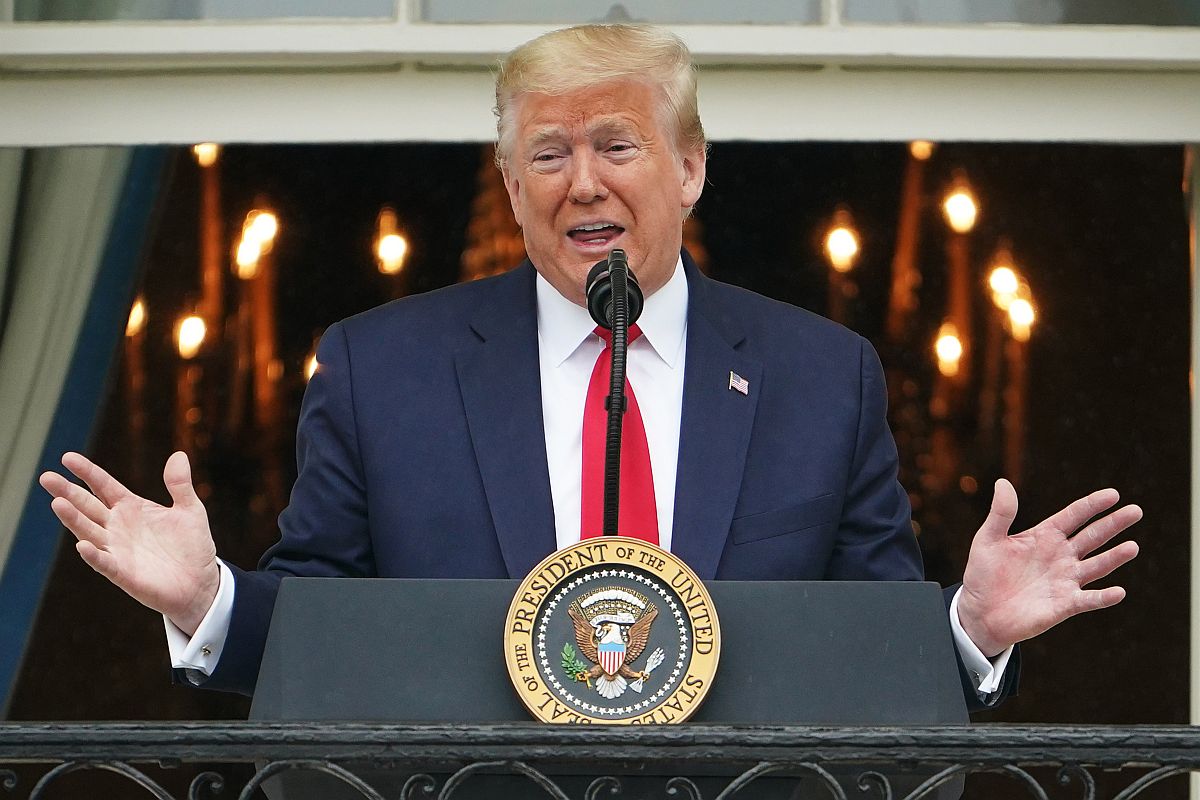
US willing to ‘mediate or arbitrate raging border dispute’: Donald Trump on India-China standoff at LAC
Several areas along the LAC in Ladakh and North Sikkim have witnessed major military build-up by both the Indian and Chinese armies recently, in a clear signal of escalating tension and hardening of respective positions by the two sides even two weeks after they were engaged in two separate face-offs.
by SNS WebAmid heightened tensions at the Line of Actual Control (LAC) in eastern Ladakh, US President Donald Trump on Wednesday made a surprise offer to mediate between India and China over what he calls “their now raging border dispute”.
“We have informed both India and China that the United States is ready, willing and able to mediate or arbitrate their now raging border dispute. Thank you!,” President Trump tweeted on Wednesday.
Several areas along the LAC in Ladakh and North Sikkim have witnessed major military build-up by both the Indian and Chinese armies recently, in a clear signal of escalating tension and hardening of respective positions by the two sides even two weeks after they were engaged in two separate face-offs.
The nearly 3,500-km-long LAC is the de-facto border between the two countries.
Indian and Chinese troops have remained engaged in an eyeball-to-eyeball situation in several areas along the LAC in eastern Ladakh, signalling that the standoff could become the biggest military face-off after the Doklam crisis in 2017.
India has further increased its strength in Pangong Tso and Galwan Valley – the two contentious areas where Chinese army is learnt to have been deploying around 2,000 to 2,500 troops, besides gradually enhancing temporary infrastructure.
Trump’s mediation offer comes as no breakthrough has taken place till Monday even as the India Army and China’s People’s Liberation Army held several meetings to resolve face-off in Eastern Ladakh at LAC.
It is learnt that there have been at least five rounds of talks between military commanders on the ground.
China has recently accused India of unilaterally attempting to change the status of the un-demarcated border in Ladakh after troops of the two countries were involved in scuffles at Ladakh and Sikkim in which more than ten of them were injured.
On the other hand, Indian armed forces have accused Chinese army of blocking patrols and unnecessarily erecting tents and deploying forces at Sikkim and Ladakh inside Indian territory on the LAC between the two countries.
In the first week of May, 250 Indian and Chinese soldiers clashed with iron rods, sticks, and even resorted to stone-pelting in the Pangong Tso lake area.
In the second week of May, around 150 soldiers of both sides had a face-off near Naku La Pass in Sikkim.
In both the incidents, soldiers sustained injuries.
Earlier, the two counties were in news in June 2017 when India opposed China’s road building at Doklam Plateau that made the entire Sikkim and the “Chicken Neck” near Siliguri (connecting the North-east with the mainland) easily accessible to the Chinese army.
India moved its elite strike corps near Sikkim border to counter the Chinese army’s war drills in Tibet. The dispute ended after 73 days when Chinese People’s Liberation Army and Indian Army withdrew their troops from the disputed site.
Meanwhile, the United States has accused China of engaging in provocative and coercive military and paramilitary activities with neighbouring countries including India. This White House statement comes a day after a top American diplomat backed India’s move to strongly resist Chinese aggression into its territory.
The White House said in a report, “Beijing contradicts its rhetoric and flouts its commitments to its neighbours by engaging in provocative and coercive military and paramilitary activities in the Yellow Sea, the East and South China Seas, the Taiwan Strait, and Sino-Indian border areas.”
“As China has grown in strength, so has the willingness and capacity of the Chinese Communist Party (CCP) to employ intimidation and coercion in its attempts to eliminate perceived threats to its interests and advance its strategic objectives globally,” the report stated.
“Beijing’s actions belie Chinese leaders’ proclamations that they oppose the threat or use of force, do not intervene in other countries’ internal affairs, or are committed to resolving disputes through peaceful dialogue,” it said.
The offer for mediation comes as a surprise as the US-China military frictions are also on the rise with the US navy stepping its patrols in the disputed South China Sea as well as the Taiwan Straits. Washington and Beijing are also engaged in a war of words over the origin of the Coronavirus pandemic.
Meanwhile, this is not the first time that US President Donald Trump has offered to mediate between India and its border-sharing country.
Trump has, several times in the past, offered to mediate between India and Pakistan over the Kashmir issue.
However, India has every time turned down the offer and categorically told the international community that the scrapping of Article 370 to revoke the special status of Jammu and Kashmir was an internal matter and also advised Pakistan to accept the reality.